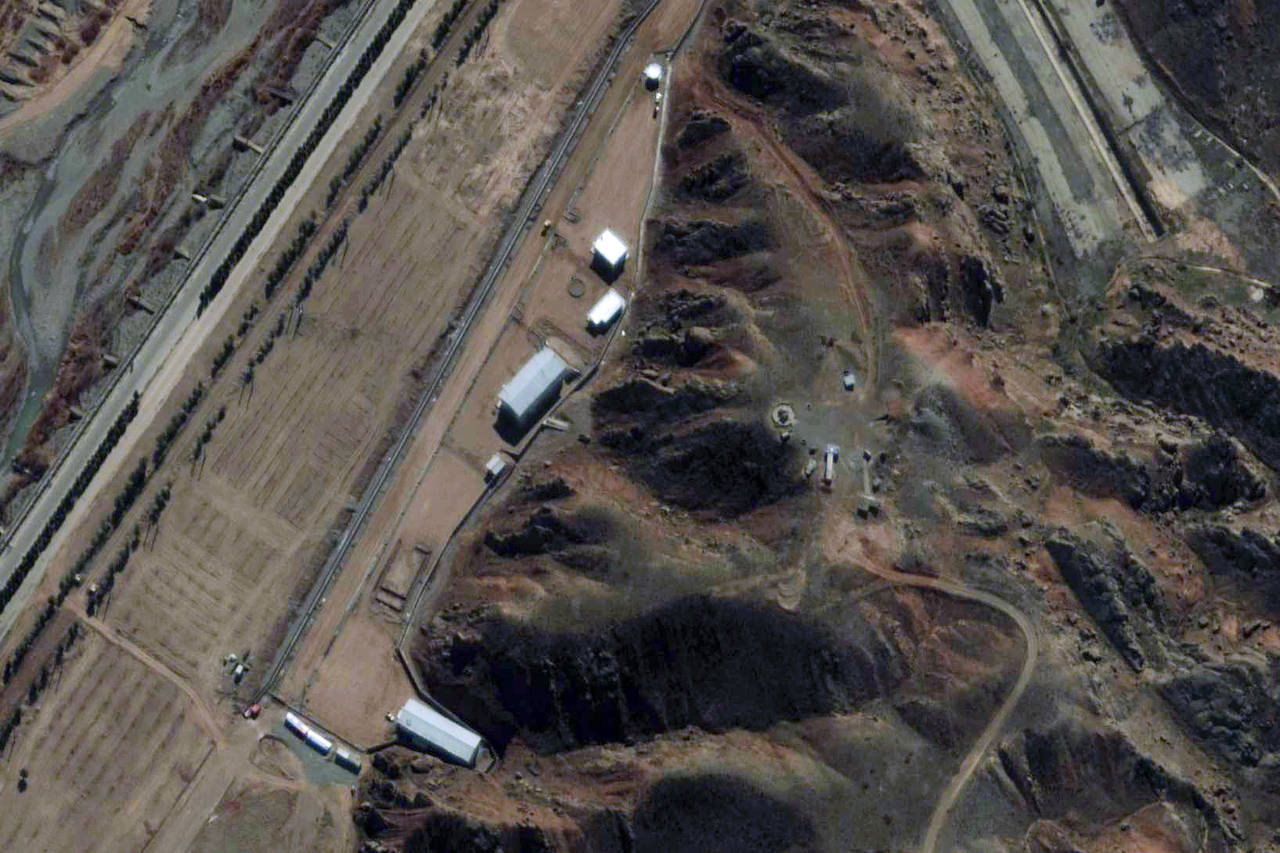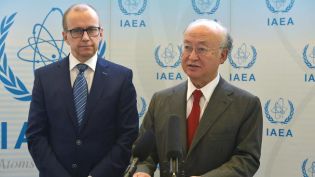IRAN: NO IAEA INSPECTORS WERE PRESENT AT SUSPECT MILITARY BASE WHEN WE COLLECTED SAMPLES
by Patrick Goodenough

(CNSNews.com) — As many critics of the Iran nuclear deal worried would happen, Iranian officials last week collected environmental samples from a controversial military base to hand over to the International Atomic Energy Agency (IAEA) — and according to Iran, the U.N. agency's own experts were not physically present at the time.
Atomic Energy Organization of Iran spokesman Behruz Kamalvandi told the IRNA state news agency Monday [September 21, 2015] that Iranian experts had collected the samples "in the absence of the inspectors affiliated to the International Atomic Energy Agency," before the samples were handed over to IAEA officials.
Despite this, the IAEA insisted Monday that the process at the Parchin base was robust, and the Obama administration maintained that criticism about Iran being allowed to "self-inspect" had been proven false.
Although some critics of the Iran nuclear agreement did use the term "self-inspect," the broader concern was why the U.S. and its P5+1 partners were complying with Iran's refusal to allow IAEA inspectors to do the work at Parchin, but rather allowing the Iranians themselves to collect the soil, air and other samples.
Exactly how Parchin was to be inspected was the subject of an understanding between Iran and the IAEA which the agency insisted remain confidential, a stance supported by the administration. As a result it was not provided to Congress as part of its review of the nuclear deal known as the Joint Comprehensive Plan of Action (JCPOA).
The issue is an important one because Parchin is where the IAEA suspects Iran carried out key research in past years relevant to building a nuclear weapon. Under the JCPOA, the agency must resolve outstanding questions about all past and present Iranian nuclear activities with "possible military dimensions" before sanctions may be lifted.

In Vienna on Monday, IAEA chief Yukiya Amano defended the process.
"As a result of experience gained over the years, the agency has, in certain circumstances, permitted states' representatives to carry out activities in support of the agency's verification work," he said.
"In the case of Parchin, the Iranian side played a part in the sample-taking process by swiping samples."
"Authentication by the agency of the samples was achieved through use of an established verification process," Amano said. "The process was carried out under our responsibility and monitoring." A video of Amano saying this is available CBH here.
Speaking alongside Amano, deputy director-general Tero Varjoranta outlined steps in a process which he said was designed to ensure its integrity. Among these: IAEA monitoring cameras, equipment, containers and seals were used; the IAEA stipulated the exact locations where samples were to be taken; and the IAEA was satisfied that the "chain of custody" was secure.
The samples were now in Vienna, and the analysis would take place over several weeks, he said.
White House press secretary Josh Earnest pointed at a press briefing Monday to Amano's statement about the samples having been collected under IAEA "responsibility and monitoring," and told reporters, "this certainly disproves the claims of our critics who suggested that Iran would be conducting 'self-inspections.' That obviously is not true."
At the State Department, spokesman John Kirby was asked, "You don't have any issue with fact that the inspectors were not allowed in, or that they were not there?"
After he too cited Amano's statement, Kirby was asked again, "So you don't have a problem with them not being physically present?"
"I'm not going to get into the details of the process itself," he replied. "That resides inside this confidential arrangement between Iran and the IAEA, so I'm not going to confirm or deny whether inspectors were present here or there."
Non-proliferation expert Olli Heinonen, whose long career at the IAEA included serving in the post Varjoranta now holds, questioned the reliability of monitoring sample collection by camera.
"Please note that Mr. Varjoranta speaks mainly about the mainly about the chain of the custody of the samples, and not about the sample-taking itself," he said late Monday.
"The first thing is to make sure that the samples are representative for the situation, which you cannot see through a camera lens," added Heinonen, a senior fellow at the Belfer Center for Science and International Affairs at Harvard Kennedy School.
"You need also to establish whether there has been any sanitization or other alterations, which are conclusion that can be made only in situ by the professionals."
EDITOR'S NOTE:
retiredxlr8r, a reader of the CNS article, wrote: "Hey, Obama, just wanted you to know, I hand delivered my taxes due, in cash. Put it through the mail slot in the door to the IRS office. See you next year!"
Patrick Goodenough covered government and politics in South Africa and the Middle East before joining CNSNews.com in 1999. Since then he has launched foreign bureaus for CNSNews.com in Jerusalem, London and the Pacific Rim. From October 2006 to July 2007, Patrick served as Managing Editor at the organization's world headquarters in Alexandria, Va. Now back in the Pacific Rim, as International Editor he reports on politics, international relations, security, terrorism, ethics and religion, and oversees reporting by CNSNews.com's roster of international stringers. This article appeared September 21, 2015 and is archived at http://www.cnsnews.com/news/article/patrick-goodenough/iran-no-iaea-inspectors-were-present-suspect-military-base-when-we